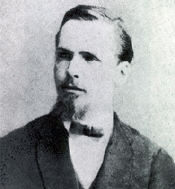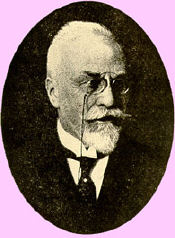   |
BIBLIOGRAPHIC SOURCE(S)
BRIEF SUMMARY CONTENTRECOMMENDATIONSEVIDENCE SUPPORTING THE RECOMMENDATIONS IDENTIFYING INFORMATION AND AVAILABILITY MAJOR RECOMMENDATIONSThe ratings
of importance to the care process, (A, B, C) and the ratings for strength
of evidence, (I, II, III) are defined at the end of the "Major Recommendations"
field.
Diagnosis The initial examination for a patient with diabetes mellitus includes all features of the comprehensive adult medical eye evaluation, with particular attention to those aspects relevant to diabetic retinopathy. History An initial history should consider the following elements:
The initial examination should include the following elements:
Examination Schedule Recommended Eye Examination Schedule
for Patients with Diabetes Mellitus
*Abnormal findings may dictate more frequent follow-up examinations. Treatment Management recommendations for patients with diabetic retinopathy are summarized in the table below. Management Recommendations for
Patients with Diabetes
The follow-up evaluation includes a history and examination. History A follow-up history should include changes in the following:
A follow-up examination should include the following elements:
Provider Because of the complexities of the diagnosis and surgery for PDR, the ophthalmologist caring for patients with this condition should be familiar with the specific recommendations of the Diabetic Retinopathy Study (DRS), Early Treatment Diabetic Retinopathy Study (ETDRS), United Kingdom Prospective Diabetes Study (UKPDS), and Diabetes Control and Complications Trial (DCCT). [A:III] The ophthalmologist should also have training in and experience with the management of this particular condition. [A:III] Counseling/Referral Patient education about the importance of maintaining near-normal glucose levels and near-normal blood pressure and lowering serum lipid levels is an important aspect of the care process. [A:III] Patients with diabetes mellitus without diabetic retinopathy should be encouraged to have annual dilated eye examinations to detect the onset of diabetic retinopathy. [A:III] Patients should also be informed that effective treatment for diabetic retinopathy depends on timely intervention, despite good vision and no ocular symptoms. [A:III] Those patients whose conditions fail to respond to surgery and those for whom further treatment is unavailable should be provided with proper professional support and offered referral for counseling, vision rehabilitation, or social services as appropriate. [A:III] Definitions: Ratings of Importance to Care Process Level A, most important
Ratings of Strength of Evidence
CLINICAL ALGORITHM(S)None provided
EVIDENCE SUPPORTING THE RECOMMENDATIONSTYPE OF EVIDENCE SUPPORTING THE RECOMMENDATIONSThe type of supporting
evidence is identified and graded for each recommendation (see "Major Recommendations.")
IDENTIFYING INFORMATION AND AVAILABILITYBIBLIOGRAPHIC SOURCE(S)
ADAPTATIONNot applicable:
The guideline was not adapted from another source.
DATE RELEASED1998 Sep (revised
2003)
GUIDELINE DEVELOPER(S)American Academy
of Ophthalmology - Medical Specialty Society
SOURCE(S) OF FUNDINGAmerican Academy
of Ophthalmology
GUIDELINE COMMITTEEPreferred Practice
Patterns Committee, Retina Panel
COMPOSITION OF GROUP THAT AUTHORED THE GUIDELINERetina Panel
Members: Emily Y. Chew, MD (Chair); William E. Benson, MD; H.
Culver Boldt, MD; Tom S. Chang, MD; Louis A. Lobes, Jr., MD; Joan W. Miller,
MD; Timothy G. Murray, MD; Marco A. Zarbin, MD, PhD; Leslie Hyman, PhD
(Methodologist)
Preferred Practice Patterns Committee Members: Joseph Caprioli, MD (Chair); J. Bronwyn Bateman, MD; Emily Y. Chew, MD; Douglas E. Gaasterland, MD; Sid Mandelbaum, MD; Samuel Masket, MD; Alice Y. Matoba, MD; Donald S. Fong, MD, MPH FINANCIAL DISCLOSURES/CONFLICTS OF INTERESTNo proprietary
interests were disclosed by members of the Preferred Practice Patterns
Retina Panel for the past 3 years up to and including June 2003 for product,
investment, or consulting services regarding the equipment, process, or
products presented or competing equipment, process, or products presented.
GUIDELINE STATUSThis is the current
release of the guideline.
This guideline updates a previous version: American Academy of Ophthalmology (AAO), Preferred Practice Patterns Committee, Retina Panel. Diabetic retinopathy. San Francisco (CA): American Academy of Ophthalmology (AAO); 1998. 32 p. All Preferred Practice Patterns are reviewed by their parent panel annually or earlier if developments warrant. GUIDELINE AVAILABILITYElectronic copies:
Available from the American
Academy of Ophthalmology (AAO) Web site.
Print copies: Available from American Academy of Ophthalmology, P.O. Box 7424, San Francisco, CA 94120-7424; telephone, (415) 561-8540. AVAILABILITY OF COMPANION DOCUMENTSNone available
PATIENT RESOURCESThe following
patient education booklet is available:
Please note: This patient information is intended to provide health professionals with information to share with their patients to help them better understand their health and their diagnosed disorders. By providing access to this patient information, it is not the intention of NGC to provide specific medical advice for particular patients. Rather we urge patients and their representatives to review this material and then to consult with a licensed health professional for evaluation of treatment options suitable for them as well as for diagnosis and answers to their personal medical questions. This patient information has been derived and prepared from a guideline for health care professionals included on NGC by the authors or publishers of that original guideline. The patient information is not reviewed by NGC to establish whether or not it accurately reflects the original guideline's content. NGC STATUSThis summary was
completed by ECRI on February 20, 1999. The information was verified by
the guideline developer on April 23, 1999. This summary was updated again
on April 30, 2004. The information was verified by the guideline developer
May 20, 2004.
COPYRIGHT STATEMENTThis NGC summary
is based on the original guideline, which is subject to the guideline developer's
copyright restrictions. Information about the content, ordering, and copyright
permissions can be obtained by calling the American Academy of Ophthalmology
at (415) 561-8500.
|
||||||||||||||||||||||||||||||||||||||||||||||||||||||
|
|